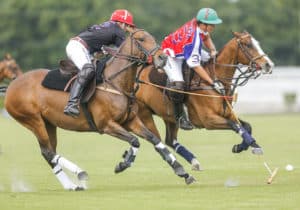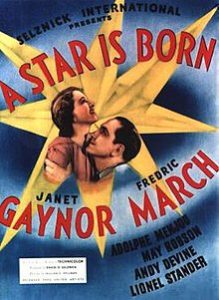 Pop quiz: Where can you show off your favorite sundress–or shorts, sip champagne–or soda, and stroll around an enormous field tamping down divots while kids cavort alongside canines, just over an hour away? (Hint: horses are involved.) Answer… at the Newport International Polo grounds in Portsmouth, RI. When friends invited us to join their party for an evening of polo this past Saturday I was all in, especially when I found out my four-footed companion was also welcome.
Pop quiz: Where can you show off your favorite sundress–or shorts, sip champagne–or soda, and stroll around an enormous field tamping down divots while kids cavort alongside canines, just over an hour away? (Hint: horses are involved.) Answer… at the Newport International Polo grounds in Portsmouth, RI. When friends invited us to join their party for an evening of polo this past Saturday I was all in, especially when I found out my four-footed companion was also welcome.
For over 130 years, polo matches have been among Newport’s grandest and most popular traditions–a legacy from the Gilded Age. I’m not the only Morrill Memorial Library staff member, it appears, to experience its charms. Hearing that I was going to watch USA take on Ireland the following day, Lydia, who oversees the excellent Technical Services Dept. in the fourth floor “stucco tower,” said “You’ll love it!” and suggested I bring along the library’s brand new picnic basket.
Among the Norwood Library’s circulating collection of non-traditional items, aka the “library of things,” is a woven, gingham-lined picnic hamper complete with stakes for securing your blanket, a paperback of picnic recipes, and a variety of wine accessories. I added some pasta and pesto salad, two bottles of vino—strictly to test out the corkscrew and spout, of course–grabbed a couple of lawn chairs, and hit the road.
70 minutes later, approaching the linden tree- and fieldstone wall-lined entrance to historic Glen Farm, we caught the strains of Irish music and the heady aroma of horses and grilling hamburgers. Our hosts had thoughtfully reserved a tailgate spot, canvas awning included, and were firing up the barby. If you missed the online registration for one of these coveted spaces back in January, not to worry. Pony up $15 and you can park your car as well as yourself and your cooler mere yards from the action.
The pre-polo festivities—a promenade around the grassy pitch the size of nine football fields—are part of the fun. Some spectators really get into the spirit. Attired in green, orange, and white, one group displayed their unbridled patriotism by planting a dozen little flags of Ireland in the turf next to a beautiful Irish picnic blanket. No sign of soda bread but the Guinness was flowing freely.
It’s all about the people and pup watching. Observing a cameraman crouched down pointing his oversize lens toward us, I instinctively straightened up. Wait, was he actually zooming in on my companion’s well-turned ankle? But no, his subject appeared to be my rather comical-looking, though much beloved, hound.
At 5:00 sharp the mounted polo ponies–more like 1,000 lb. thoroughbreds–entered the pitch and the players were introduced. We stood for the Irish and American national anthems, sent up a rousing cheer, and the game was on! Of the four home team competitors three were women, including a father/daughter duo. Players score by driving a solid white ball into the opposing team’s goal using a long-handled mallet. The match is comprised of six 7-minute periods, or chukkas, between which tired mounts are substituted for fresh ones. The action is fast and furious.
During half-time, spectators of all sizes and breeds swarm the field in the traditional divot-dance to flatten down the sod displaced by horseshoes. Just before play resumed, an Australian sheep dog cut loose and charged back onto the pitch in a misguided attempt to herd the flock. The straight-shooting British announcer (“There was no one in front of the goal and she still missed the shot—inconceivable!”) was not amused. The disgraced dog owner remained anonymous.
We noshed on your basic summer fare–burgers, franks, and salad—while our neighbors nibbled on bacon-wrapped scallops and deviled eggs. Newport Polo attracts a certain champagne and caviar clientele, after all; the queue for Veuve Clicquot was at least as long as the line for the porta-potties.
After a hard-fought contest, Team USA prevailed 8-7. The crowd then lined the perimeter of the pitch to high five the riders as they made their final circuit. Momentarily distracted, I failed to notice my little leashed buddy had scaled the low barrier to participate in the celebratory send-off. Somehow I managed to save him from certain death—or at least a badly bruised paw—a nanosecond before the horses thundered past. I opted to forgo the autograph signing, champagne toast and trophy presentation, deciding I’d had enough excitement for one day.
From The Golden Summers—An Antic History of Newport by Richard O’Connor, I learned that polo was first introduced to the United States in Newport, at the Westchester Polo Club, in 1876. Polo originated in Persia (modern-day Iran) sometime between the 6th century BC and the 1st century AD. Initially it was a training game for the cavalry, often the king’s guard or other elite troops. The sport is now played in 77 countries, with more than 275 polo clubs registered with the U.S. Polo Association.
For delving into the finer points of the game, I recommend reading As to Polo by William Cameron Forbes. Former owner of the Forbes Estate recently purchased by the Town of Norwood, the author hosted matches on the grounds, where his favorite polo pony is buried. The Minuteman Library Network also carries The Polo Primer: a Guide for Players and Spectators by Steven D. Price, as well as Allan Forbes’s Sport in Norfolk County. But to experience polo up close and personal, saddle up and head to the City by the Sea on any Saturday afternoon from now through September. And the next time you’re in the library, “chukka” out the picnic basket and all the other fun and functional items we lend for free, including a set of backyard horseshoes.
April Cushing is the Adult and Information Services Supervisor at the Morrill Memorial Library in Norwood, Mass. Read April’s column in the August 2nd edition of the Norwood Transcript & Bulletin.



